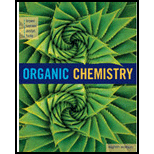
Concept explainers
(a)
Interpretation:
The role of hydrophobic interactions in stabilizing the double-stranded DNA has to be discussed.
Concept Introduction:
The groups which are not present in contact with the aqueous medium (or) which repels the water molecules are said to be hydrophobic in nature.
The DNA molecule is made up of nucleotides which consist of Nitrogenous bases, Sugar molecules and Phosphate ions. The Nitrogenous bases are two types: Purines and Pyrimidines. The Purine bases are Adenine and Guanine. The Pyrimidine bases are Cytosine and Thymine. In the formation of the DNA molecule the bases are paired with each other (Purine base with Pyrimidine base). The pairing occurs as A-T and G-C, the Adenine base containing
(b)
Interpretation:
The role of hydrophobic interactions in stabilizing the Lipid bilayers has to be discussed.
Concept Introduction:
The groups which are not present in contact with the aqueous medium (or) which repels the water molecules are said to be hydrophobic in nature.
The lipid bilayer is a thin polar membrane made up of two layers of lipid molecules. The lipid bilayer is the major constituent in the cell membrane (or) plasma membrane of the cells, which is selectively permeable.
(c)
Interpretation:
The role of hydrophobic interactions in stabilizing the Soap micelles has to be discussed.
Concept Introduction:
The groups which are not present in contact with the aqueous medium (or) which repels the water molecules are said to be hydrophobic in nature.
The soap micelle is defined as when the soapy water is mixed with grease or dirt, the soap molecules forms tiny clusters which are called as micelles.
Want to see the full answer?
Check out a sample textbook solution
Chapter 28 Solutions
ORGANIC CHEMISTRY-OWL V2 ACCESS
 ChemistryChemistryISBN:9781305957404Author:Steven S. Zumdahl, Susan A. Zumdahl, Donald J. DeCostePublisher:Cengage Learning
ChemistryChemistryISBN:9781305957404Author:Steven S. Zumdahl, Susan A. Zumdahl, Donald J. DeCostePublisher:Cengage Learning ChemistryChemistryISBN:9781259911156Author:Raymond Chang Dr., Jason Overby ProfessorPublisher:McGraw-Hill Education
ChemistryChemistryISBN:9781259911156Author:Raymond Chang Dr., Jason Overby ProfessorPublisher:McGraw-Hill Education Principles of Instrumental AnalysisChemistryISBN:9781305577213Author:Douglas A. Skoog, F. James Holler, Stanley R. CrouchPublisher:Cengage Learning
Principles of Instrumental AnalysisChemistryISBN:9781305577213Author:Douglas A. Skoog, F. James Holler, Stanley R. CrouchPublisher:Cengage Learning Organic ChemistryChemistryISBN:9780078021558Author:Janice Gorzynski Smith Dr.Publisher:McGraw-Hill Education
Organic ChemistryChemistryISBN:9780078021558Author:Janice Gorzynski Smith Dr.Publisher:McGraw-Hill Education Chemistry: Principles and ReactionsChemistryISBN:9781305079373Author:William L. Masterton, Cecile N. HurleyPublisher:Cengage Learning
Chemistry: Principles and ReactionsChemistryISBN:9781305079373Author:William L. Masterton, Cecile N. HurleyPublisher:Cengage Learning Elementary Principles of Chemical Processes, Bind...ChemistryISBN:9781118431221Author:Richard M. Felder, Ronald W. Rousseau, Lisa G. BullardPublisher:WILEY
Elementary Principles of Chemical Processes, Bind...ChemistryISBN:9781118431221Author:Richard M. Felder, Ronald W. Rousseau, Lisa G. BullardPublisher:WILEY





